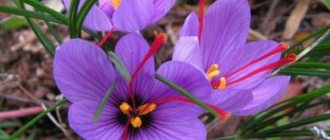Surfinia varieties
There are more than 20 species of this crop and many varieties of surfinia.
Ampelnaya
Surfinia Ampelnaya perennial
Ampelnaya is a perennial plant grown in gardens. It spends the winter period in basements, without leaves (they are cut off before sending the surfinia to rest); in early spring, buds and foliage form on it.
Yellow
Surfinia Yellow
Yellow is the first selective variety of an ampelous species, characterized by early and long flowering. The number of buds is numerous, the color ranges from light to dark yellow.
Burgundy
Surfinia Burgundy
Burgundy is a branched plant on which wine-colored flowers appear in large numbers, which disappear only with frost.
Double Purple
Surfinia Double Purple
A fast-growing variety, 20 cm tall, characterized by its resistance to excess moisture. There are many flowers on the bush, the color is bright purple;
Hot Pink
Surfinia Hot Pink
Hot Pink - has large inflorescences in two shades (pink background with bright crimson stripes);
Table White
Surfinia Table White
Table White - flowering lasts more than 5 months, the flowers are similar to bells and have a snow-white hue;
Red
Surfinia Red
Red - small bushes in the shape of a ball, characterized by long flowering, the buds have a bright red hue. The species is capricious and demanding in maintaining optimal growing conditions.
Surfinia ampelous: what’s special about it?
The Surfinia variety series became the first group of hanging petunias that are resistant to rain and bad weather. Therefore, surfinias are often used for landscaping balcony boxes, hanging baskets, outdoor flowerpots and containers. These ampels grow long shoots and bloom very profusely. Most varieties are distinguished by ultra-fast growing season: in 1.5-2 months the bush is completely formed and begins flowering, which lasts until frost.
A small disadvantage of surfinia is its method of reproduction - exclusively vegetative. That is, it reproduces only by rooting cuttings cut from the mother plant.
A huge number of varieties have been bred under the Surfinia® brand, differing in bush shape, growth method, size and color of flowers.
Sowing surfinia seeds
Most often, surfinia is grown at home from seeds. For these purposes, it is necessary to select high-quality seed, paying special attention to the shelf life and integrity of the packaging.
Surfinia is sown in early spring in the following sequence:
- Preparing the container – any containers or small pots will do.
- Preparation of the substrate - peat tablets, or sand with peat. The soil for seedlings must be breathable.
- Arrangement of a drainage system made of foam balls, pebbles or expanded clay.
Surfinia growing from seeds
- Due to its small size, planting material should not be buried in the ground. Several seeds are placed on moist soil and covered with film.
- The pots are opened daily for ventilation.
- Watering is carried out from a spray bottle as the soil dries out (it should remain slightly moist).
- The pots should be installed in a designated place where the air temperature reaches at least 20 degrees.
- The first shoots should appear in 15-20 days. At this time, the roots must be sprinkled with fried sand to protect them from rotting and strengthen them, and the protective film must be removed.
- Transplanting one specimen into pots is done when the plant has 2 leaves.
Surfinia ampelous: care and cultivation at home
By providing ampelous sulfinia with attention and proper care, you can enjoy lush and long-lasting flowering throughout the season. To grow a flower like the one from the picture, it is recommended to follow the basic rules.
"Surfinia ampelous in a flowerpot"
Growing and caring for surfinia
There are 2 ways to grow surfinia at home:
- Method 1 - growing seedlings.
"Seedling"
Important ! Growing from seeds is possible, but it is a rather lengthy and labor-intensive process. Even experienced flower growers do not always succeed.
The seeds are very small in size, so when sowing, several of them are placed on moist soil in pots, then covered with film. The soil should not be allowed to dry out, so moisten it regularly by irrigating it with a spray bottle. Particular attention must be paid to the surrounding conditions: the room should be well lit and warm (from +20 degrees). For good germination, make sure that the seedlings receive direct sunlight. After the first shoots, the roots are sprinkled with sand to prevent rotting. As soon as 2 full leaves grow, the seedlings are divided into different pots. Before planting in open ground, seedlings are hardened off by exposing them outside for a short time. You need to start from the 1st hour, gradually increasing the stay time.
- 2 Method - cuttings.
"Surfinia cuttings"
At the beginning of autumn, a cutting about 10 cm long is cut from a large and healthy bush. It is rooted in fertile soil and a kind of greenhouse is created, covering the plant with a plastic bottle or container. With the appearance of the first two leaves on the cuttings, the greenhouse can be removed. By spring, a lush bush will form, which is quite ready for life on the street.
This flower is very sensitive to external environmental conditions. In order for the plant to actively grow and develop, it must be located in a place that receives a sufficient amount of sunlight. When thinking about the location for hanging baskets and flowerpots, you need to choose places that meet the following criteria:
- sunny side. It is advisable that the flower be in partial shade at noon;
- the presence of an artificial canopy, since the flower does not tolerate rain well;
- flower pots are hung on the leeward side, protecting the surfinia from drafts.
The next point that is very important when caring for this flower is the choice of soil. The soil should be loose and fertile. Experienced gardeners advise growing surfinia in loam or sandy loam with a neutral or slightly acidic environment. To obtain soil suitable for this flower, peat, vermicompost, and turf are mixed in a ratio of 1:1:4. You can add vermiculite to the finished mixture. It will make the soil mixture loose.
Before planting, the soil can be fertilized. For this purpose:
- ready-made fertilizers containing potassium;
- organic fertilizers - mullein infusion or the drug "Vermistim".
Fertilizing is necessarily accompanied by watering or spraying. They have a positive effect on foliage development and prolong the flowering period. The procedure is carried out once a week.
Important! It is allowed to use a ready-made balanced complex for flowering plants.
Surfinia loves frequent watering, but at the same time reacts extremely negatively to stagnant water. Therefore, before filling the pot with soil, it is recommended to lay drainage 5 cm thick at the bottom.
"How to lay drainage"
The frequency of watering is determined by the time of year. In hot weather it is better to moisten the soil daily, and on rainy and cool days - as the soil dries out. A flower planted in a pot is watered under the roots with settled warm water; for a plant in a flowerpot, spraying from a spray bottle can be used.
Important! Using cold water for irrigation or exposure to raindrops causes the foliage to wilt.
To give the bush a neat and compact shape, it is recommended to trim its shoots. This is done between July and August. The lush shape and uniform development of surfinia is achieved by pinching the shoots as they reach 20 cm in length. Do not despair about the decrease in the intensity of development. The flower regains its strength within a couple of weeks, after which it is ready to delight its owner again with an abundance of bright buds.
We must not lose sight of the fact that, like any other plant, surfinia can get sick. Spider mites may appear on the plant. This manifests itself in the appearance of yellowish dots and small cobwebs. When the first signs are detected, it is necessary to treat the flower with a soap solution. Treatment with specialized chemicals - Actellik, Nero, Fitoverm - is quite effective.
The appearance of brown spots indicates the development of late blight. Then it is necessary to treat with preparations with a high concentration of copper.
The development of wet, gray or white rot is a consequence of violation of the maintenance rules: stagnation of water in the pot, cold environment, acidic soil. In this case, complex treatment is carried out with organic preparations (for example, Fitosporin) and chemicals (for example, Maxim).
To combat whitefly, Aktara and Mospilan are used. The impact of this parasite is manifested in wilting and yellowing of foliage.
How does care differ during the flowering season as opposed to the dormant period?
Despite the fact that surfinia is a street resident, it dies at the first frost. It can only be saved by moving it into the house. Before this, all the foliage is cut off, leaving no more than 15 cm. Next, the flowerpots and pots are moved to the balcony or loggia. You need to water much less often as the soil dries out. With the onset of spring, the flower is transferred back to the street.
“Preparing Surfinia for Winter”
Surfinia cuttings
Reproduction of surfinia by cuttings
Petunia surfinia can also be propagated by cuttings. To do this you need:
- At the beginning of autumn you need to cut off a large specimen of the plant.
- Plant it in a fertile substrate.
- Cover with a jar or film to create the required level of humidity and heat.
- When the soil dries out, it must be moistened, but moisture should not be retained.
- The greenhouse should remain in place until new leaves form on the plant.
- A viable bush can be observed already in mid-spring, at which time it is transplanted to the place where it will grow on a permanent basis.
Seedling care
Growing surfinia seedlings
Since surfinia loves light, seedlings need good lighting. If necessary, you need to create artificial lighting so that the adult plant can subsequently bloom profusely.
When leaves appear on young seedlings, it is important to pinch them in a timely manner, removing the top pair of leaves. This procedure will stimulate the growth of lateral layers so that the bush will be lush and branchy in the future.
Planting in open ground is carried out at the end of spring. To do this, it is prepared, which consists of watering and fertilizing. A complex fertilizer must contain all the necessary substances, but potassium should be the predominant component. Fertilizer for seedlings is diluted in a weaker concentration than for adult plants, gradually bringing the indicators to those indicated on the package. Fertilizers must be applied every 2 weeks.
Important . You can create a colorful flowerbed in which all the surfinia flowers will highlight each other by alternating shades or combining colors.
Conditions for surfinia
Surfinia ampelous can grow fruitfully and delight its owners with long-lasting flowering only if there is a constant supply of sunlight. It is equally important to protect the plant from the influence of winds so that the shoots do not get confused with each other and do not break.
Attention! Raindrops falling on the inflorescences can also harm surfinia. Therefore, it is necessary to create protection from precipitation.
Location and lighting
The Petuniaceae family, including Surfinia, are demanding of sunlight. Seedlings deprived of lighting will have weak sprouts and a small number of flower ovaries. The best option is 10-12 hours of daylight.
In a flowerbed, the plant can thrive on sunny sides with minimal shading (east, south, southeast, southwest). If you plant the plant in a darker place, this may affect the quality and duration of flowering.
The soil
The composition of the soil plays an important role in growing and caring for surfinia. If seedlings grow on peat tablets, then an adult plant needs more fertile soil. Surfinia will develop productively on loam with an acidity of 5-6 pH, as well as on sandy substrates. The main condition for ideal cultivation is space and fertile soil with all the necessary microelements and vitamins.
Difference between surfinia and petunia
At first glance, surfinia and the ampelous petunia from which it came are almost impossible to distinguish from each other, and it is quite difficult for the average person to understand what the difference is between them. So, what is the difference between petunia and surfinia?
Surfinia itself is a fairly strong plant and has strong, long stems, which make this beautiful flower an order of magnitude taller than its hanging “relative” and enable landscape designers to experiment with it to their heart’s content. In growth, surfinia can reach about 3 meters, while petunia does not reach even a meter.
Surfinia blooms much more tenderly and more luxuriantly than petunia, and does not require special formation of the bush. But if its branching still does not go as it should, then the shoots of the plant can be pinched slightly, by 20-30 centimeters.
The advantage of a flower like surfinia is that it is absolutely indifferent to various negative manifestations of bad weather, unlike petunia, whose petals are often torn by the wind, turning them into ugly flakes, and the rain completely turns them into a shapeless mass. Surfinia withstands any bad weather conditions, and damaged leaves and flowers, if they do appear as a result of the intervention of weather phenomena, can very quickly be replaced with others, without damaging the appearance.
But, at the same time, surfinia requires more careful care: it needs regular feeding and frequent watering, at least twice a day, when limited, the plant quickly loses its ability to bloom. Petunia, on the contrary, is a drought-resistant plant and does not require high humidity.
Hardening before planting in open ground
Hardening of the plant is the basis for the further growth of surfinia. In order for seedlings to adapt to new conditions, they need to be prepared. To do this, young sprouts are taken outside for several hours, leaving them in a dark place where there is no risk of direct sunlight hitting the leaves.
Since hardening is carried out at the end of May, there is no threat of daytime frosts, but precipitation is quite likely. A small amount of rainwater will not harm the seedlings, but it is important to monitor the level of moisture and the strength of the rain, because weakened plants can break under the pressure of a downpour.
Planting surfinia in open ground
Surfinia in a flowerbed
Surfinia looks great in hanging flowerpots, tall containers or in a flowerbed. However, when planting, you need to take into account the ability of surfinia to quickly increase the vegetative mass and root system. In order for the plant to develop and bloom magnificently, it should not be crowded.
When planting in pots or containers, the container volume should be selected at a rate of at least 5 liters per plant. When planting surfinia in a flowerbed, maintain a distance between plants of at least 40 cm. Closer planting will provoke rot and disease.
The soil for planting surfinia must be prepared in advance. If the soil is dense, add sand (1 bucket per 1 sq. m.), the soil should be light and loose. Fill 1/2 bucket with humus per 1 sq. m.), ash (1 cup per 1 sq. m.) and complex fertilizer in granules (1 tbsp. per 1 sq. m.). Mix everything well.
For flower pots and containers, soil is mixed from garden soil (2 buckets), humus (1/2 bucket), sand (1/2 bucket), ash (1 cup) and complex fertilizer (1 tbsp.)
Methods of application
There are quite a few ways to use surfinia in home floriculture. As a rule, it is used to decorate terraces, balconies, gazebos and houses, placing them in hanging flowerpots. Often blooming waterfalls from this hybrid petunia decorate city streets in the old areas of European cities. Also, bright compositions are present in the decorations of outdoor cafes and restaurant areas.
Growing crops at home is a great way to transform your landscape or facade design, as well as emphasize your high taste preferences. And given the ease of caring for the crop, its unpretentiousness to living conditions and other advantages, such an activity brings only positive emotions.
The main thing is not to forget about the basic rules of planting and provide the plant with proper care. In this case, the time and effort spent will be justified in the form of abundant flowering.
Care
The main work associated with caring for the plant occurs during its flowering period. At this point, it is important to observe 3 main points:
- watering;
- lighting;
- application of fertilizers.
Not only the number of flowers on the bush, but also the duration of their flowering depends on how carefully all the recommendations are followed.
Watering
Maintaining an optimal level of moisture in the soil is the main condition for good growth of surfinia. It does not require a large amount of water, so it is recommended to water it in small portions, but quite often. If the plant is in hanging flowerpots, it can be sprayed with a spray bottle. The main thing is to use settled water that is at room temperature.
Important. Watering is carried out when there is no sunlight - early in the morning or during sunset.
Feeding
Periodic feeding is also important for surfinia. In order for it to bloom normally, the bushes need to be fed with potassium. You can buy special fertilizers in the store, or prepare them yourself. The main thing is to observe the recommended proportions, and apply along with watering.
Varietal diversity
Currently, the Japanese company Suntory, which is considered the ancestor of surfinia hybrids, offers a wide variety of varieties with different shapes, flower colors and sizes.
Each of them may be interesting for a particular grower:
- The classic varieties of the surfinia flower include early-flowering species that are capable of forming powerful bushes with long stems and many flowers. The shape of the latter remains characteristic of the traditional form of petunias. Differences in flower color are emphasized by the names: Surfinia White, Surfinia Red, Blue, etc.
- The Table series is characterized by abundant flowering and the shape of compact ampelous or semi-ampeloid bushes. The shape of the flowers resembles small bells.
- Representatives of the Double varieties have large double flowers and are considered the most decorative. However, their flowering is not as lush and abundant as that of previous species.
- The Specials series includes the latest developments with unusual colors and a number of other unique properties. For example, Surfinia Amethyst is capable of forming a lush green cap that does not require additional pruning. The incredible aroma from a flowering plant will be heard from a distance of several meters.
Diseases and pests
The main difference between surfinia is its resistance to diseases and pests. But, like all plants, it cannot be completely protected from the risk of pathologies:
- fungal diseases most often develop due to non-compliance with watering rules and increased acidity levels;
- Spider mites are the most dangerous enemy of the Petunia family, which infects leaves and leads to the death of the flower. To get rid of it, it is necessary to treat the plant with special preparations or ordinary soapy water;
- late blight can also become one of the causes of death of surfinia; this can be prevented by using a solution of copper sulfate or preparations containing copper.
How to preserve surfinia until next year?
Since at the equator the duration of daylight all year round is 12 hours, all petunias, as well as their hybrids, need exactly this lighting regime. And, if in the summer it is not difficult to recreate comfortable conditions, then in the winter in the apartment the surfinia will have to be illuminated with a phytolamp. Otherwise, even on a southern windowsill, it may stretch out excessively, turn yellow, or even wither completely. In addition, not everyone will like the pungent smell of this nightshade plant - people prone to allergies are better off keeping the flower on an insulated balcony or in a greenhouse rather than in the bedroom.
01.jpg
If you still want to preserve the ornamental bush, then before the onset of frost it is necessary to dig it up and, together with a lump of earth, transfer it into a pot of suitable size. Dried branches, leaves and pedicels should be removed, but green shoots can be trimmed, leaving sprouts 8-10 cm long. Non-woody living stems, slightly larger than a matchstick, with 2-4 pairs of leaves are perfect for rooting.
The optimal conditions for wintering surfinia are not hot (+15...+18°C), well-lit by the sun, with a humidity of about 70-80%. There is no need to fertilize it at this time; watering should be moderate, 1-2 times a week, with soft, settled water. Closer to spring, the ambient temperature and frequency of moistening can be increased, and nitrogen fertilizing can be started in small doses to increase green mass.
p_2_1.jpg
174724476_e80291a5215ab95c5f3441ac6ae8c235_800.jpg
Surfinia in winter
In order for a perennial plant to please its owners, it must be protected from unfavorable factors even in winter, when the flower is dormant.
- Most shoots are pruned after flowering.
- The plant is placed in a warm (+5-10 degrees), but bright place, where it must be watered periodically, not allowing the soil to dry out completely.
If you follow the rules for planting and caring for surfinia, the plant will delight its owners with six-month flowering.
( 2 ratings, average: 2.50 out of 5)
Description of the plant
Surfinia is one of the varietal groups of ampelous petunia, which is distinguished by its unpretentiousness, hardiness, dense flowering until frost, attractive decorative appearance and very long vines reaching 2-3 meters.
This variety of plants is often used to decorate flowerpots, balcony boxes, and wall planters. The long vines of the plant are densely covered with large, bright flowers (up to 10-13 cm in diameter), emitting a delicate, subtle aroma.
Recently, simple types of petunias have faded into the background, while ampelous types are in the lead. Flowers look great in flower beds, flowerpots, flower beds, and go well with other flowers, both low and tall. Surfinia early flowering already 1.5 months after cuttings begins to flower and turns into a full-fledged, lush bush.
The flowers of the plant can be simple, double, semi-double, large, small-flowered, bell-shaped, single-colored or multi-colored.











